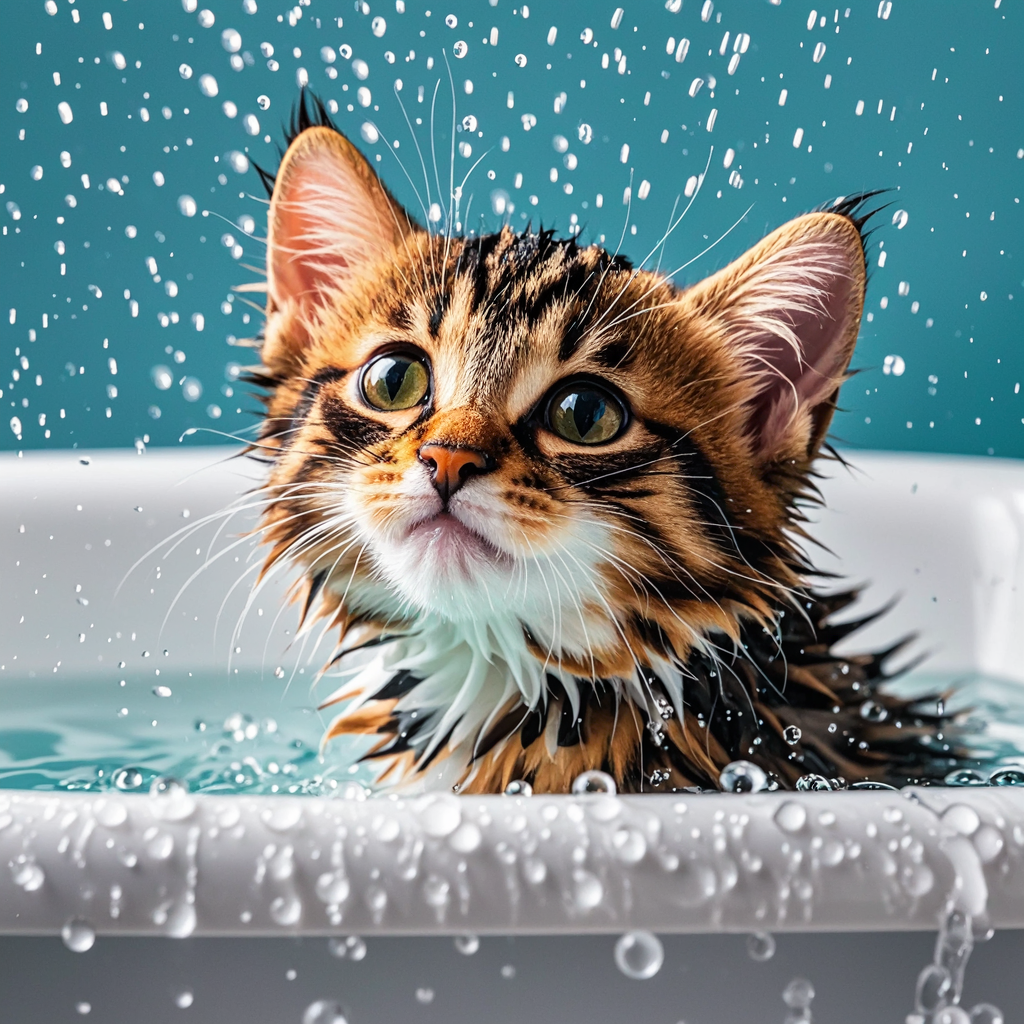Grooming is an essential part of caring for kittens, ensuring their coat remains clean and free from parasites and matting. While kittens typically groom themselves and each other, there are times when they need a little help from their human caretakers. Here’s a detailed guide on how to properly bathe and groom kittens.
1. When to Bathe a Kitten
Not all kittens need regular baths, but there are situations where a bath is necessary:
- Fleas and Parasites: If the kitten has fleas or other parasites, a bath with a flea shampoo suitable for kittens may be necessary.
- Dirty or Soiled Coat: Kittens can get into messy situations, especially during weaning. A bath can help keep them clean.
- Skin Conditions: Certain skin conditions may require medicated baths as recommended by a veterinarian.
2. Preparing for the Bath
Before bathing your kitten, gather all necessary supplies and prepare the environment:
- Supplies Needed:
- Mild kitten shampoo
- Towels
- A small cup or a gentle spray nozzle
- A non-slip mat or towel for the sink or tub
- Warm water (not hot)
- Prepare the Area: Ensure the bathing area is warm and free of drafts to keep the kitten comfortable.
3. Bathing the Kitten
Follow these steps to bathe your kitten safely and effectively:
- Brush the Coat: Before bathing, gently brush the kitten’s coat to remove loose fur and tangles.
- Fill the Sink or Tub: Fill the sink or tub with a few inches of warm water.
- Wet the Kitten: Gently place the kitten in the water, using a cup or spray nozzle to wet the fur. Avoid getting water in the eyes, ears, and nose.
- Apply Shampoo: Apply a small amount of kitten shampoo and lather gently. Focus on areas that are particularly dirty or flea-infested.
- Rinse Thoroughly: Rinse the kitten thoroughly with warm water, ensuring all shampoo is removed to prevent skin irritation.
- Dry the Kitten: Wrap the kitten in a soft towel and gently pat dry. Use a second towel if needed to remove excess moisture.
4. Post-Bath Care
After the bath, ensure your kitten is warm and comfortable:
- Dry Completely: Make sure the kitten is completely dry before allowing them to go about their activities. You can use a hairdryer on a low, cool setting if the kitten tolerates it.
- Warm Environment: Keep the kitten in a warm, draft-free area until they are fully dry.
5. Regular Grooming Practices
In addition to occasional baths, regular grooming helps maintain a healthy coat:
- Brushing: Brush your kitten’s coat regularly to remove loose fur, prevent matting, and reduce shedding. Use a soft brush or comb designed for kittens.
- Nail Trimming: Trim your kitten’s nails every few weeks to prevent overgrowth and reduce the risk of scratches.
- Ear Cleaning: Check your kitten’s ears weekly for dirt, wax, and signs of infection. Use a vet-recommended ear cleaner if necessary.
- Dental Care: Introduce tooth brushing with a kitten-specific toothbrush and toothpaste to promote good dental health from a young age.
6. Dealing with Parasites
Preventing and managing parasites is crucial for your kitten’s health:
- Flea Control: Use vet-recommended flea control products. Avoid over-the-counter treatments not specifically designed for kittens.
- Regular Vet Check-Ups: Schedule regular veterinary check-ups to monitor for parasites and overall health.
7. Handling and Socialization
Grooming time is also an excellent opportunity for bonding and socialization:
- Gentle Handling: Handle your kitten gently and make grooming sessions positive experiences with treats and praise.
- Gradual Introduction: Introduce grooming tools and procedures gradually to help your kitten become accustomed to them.
Conclusion
Bathing and grooming your kitten is essential for their health and well-being. By following these guidelines, you can ensure your kitten remains clean, comfortable, and well-groomed. Regular grooming also strengthens the bond between you and your kitten, helping them become well-adjusted, happy adult cats.
